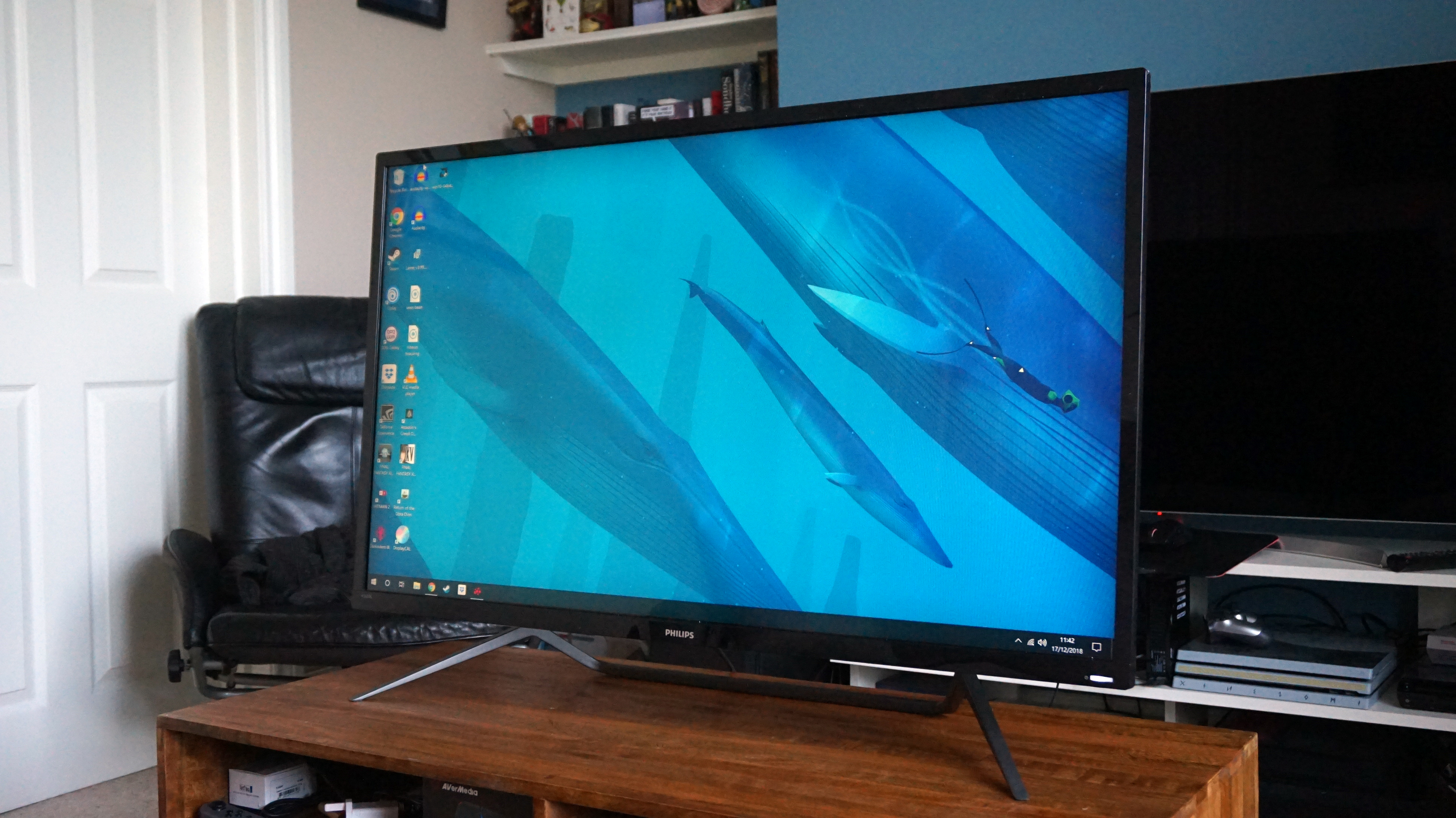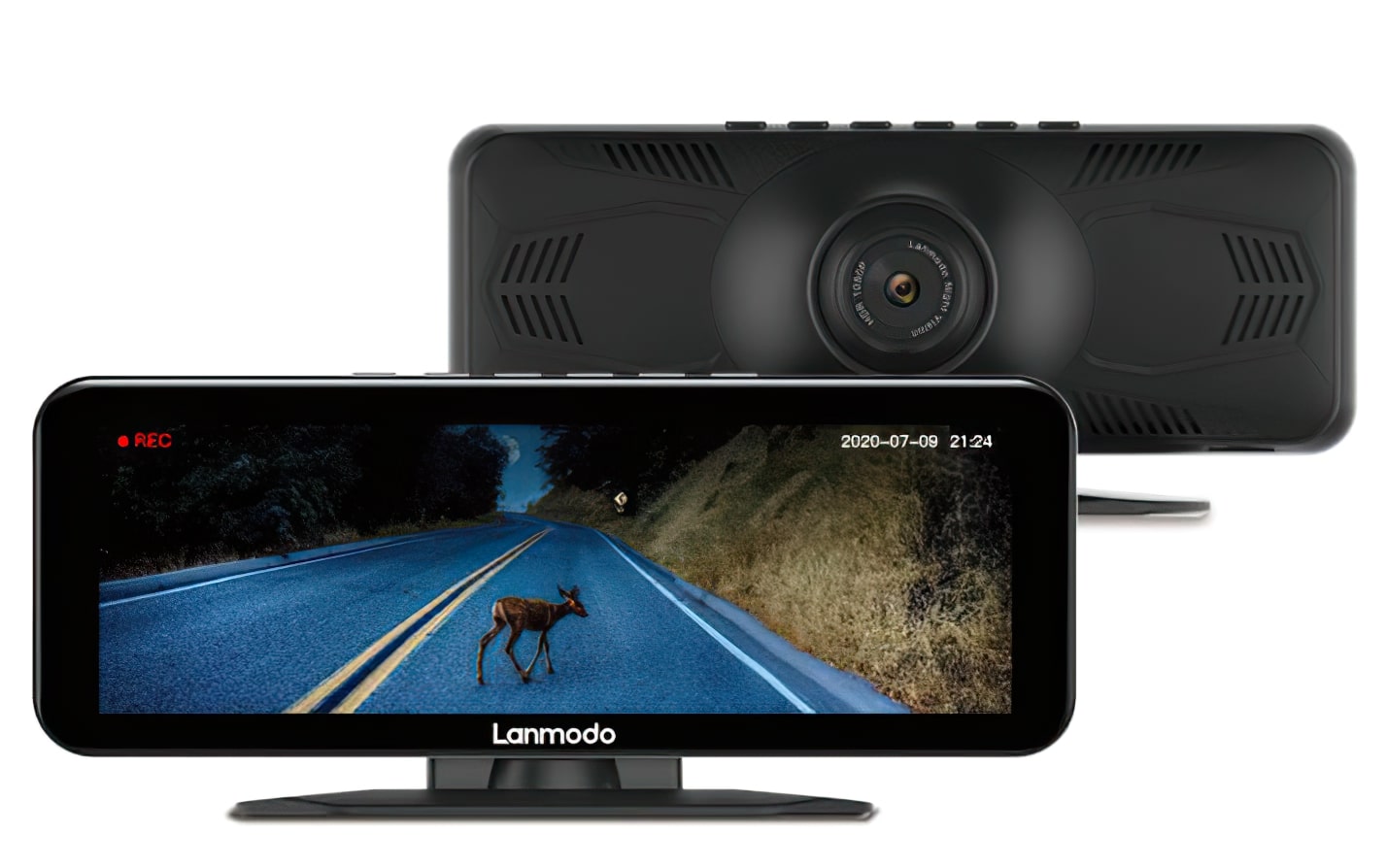
Every time an HDR monitor arrives on my desk, I say a small prayer to the gaming monitor gods: “Please, PLEASE let this one be good.” I don’t care if it’s hideously costly just like the Asus ROG Swift PG27UQ or Acer Predator X27, I simply need one which does HDR effectively and does it with out a boat load of fuss and settings twiddling.
Readers, my prayers have been lastly answered, they usually come within the type of the enormous and ever-catchily named Philips 436M6VBPAB. This jumbo TV-sized 43in 4K HDR monitor is arguably one of many best gaming monitors I’ve ever laid eyes on – and if that wasn’t sufficient, it additionally helps each Nvidia and AMD graphics playing cards and solely prices £673 / $797 (or £530 within the UK as a part of Scan’s Christmas offers promotion). What extra may you presumably ask for?
I have to admit, I initially thought Philips’ 436M6VBPAB was an AMD FreeSync 2 HDR show when it was first introduced, however I’ve since had affirmation from Philips that its VESA DisplayHDR 1000 and Ultra HD Premium licensed HDR chops can be utilized no matter which graphics card you may have in your PC. All you want is a graphics card that can do HDR, and away you go.
The solely factor that Nvidia peeps can’t make the most of with the 436M6VBPAB is the monitor’s adaptive body price sync tech, which helps to remove display screen tearing whereas enjoying games in case your graphics card can’t fairly handle a gentle 60fps. Personally, that’s not a lot of a problem for me and is one thing I can fortunately reside with out, however I do know some will discover its absence a little bit of a deal breaker at this worth.

No extra annoying management buttons to get to the onboard menu – the 436M6VBPAB comes with a helpful distant with prompt entry to brightness, quantity and its SmartImage settings amongst others.
AMD card homeowners, then again, will be capable of use this function, as adaptive sync is to all intents and functions the identical factor as AMD’s FreeSync tech. Its vary is pretty typical of most FreeSync monitors around today, too (48-60fps, in keeping with my PC’s AMD Adrenalin graphics card software program), so it’s not such as you’re being diddled out of any additional frames resulting from it not being full-fat FreeSync. Instead, you’re getting simply pretty much as good stutter and tear-free assist, plus the additional flexibility of nonetheless with the ability to make the most of its wonderful HDR chops in case you resolve to get an Nvidia card additional down the road.
Indeed, the very fact the 436M6VBPAB helps each flavours of GPU makes it one thing of a rarity in as we speak’s gaggle of HDR gaming displays, as to date every one I’ve examined has been tied to both Nvidia’s G-Sync HDR specification or AMD’s FreeSync 2 commonplace. Thankfully, Philips have executed away with all this nonsense for the 436M6VBPAB, making it one of many friendliest HDR screens you’ll be able to at present purchase.
Even higher, the image high quality of its MVA panel (which is a specific kind of VA panel tech) is just about excellent straight out of the field, which, let me let you know, is simply blissfully refreshing after the faff and ambiguous setting tweaking of the Asus PG27UQ and Acer Predator X27.

As with almost each Philips gaming monitor, the 436M6VBPAB comes with the corporate’s Ambiglow tech. The LEDs are solely on the decrease bezel this time, however the concept is that they match regardless of the predominant color is onscreen and make it appear like the picture is ‘extending’ past the body of the monitor. Personally, I discover it very distracting, so I left it turned off.
Using the monitor’s default settings, with the color temperature set to 6500Okay, its gaming-related SmartImage modes turned off and its HDR setting on Normal (bizarrely there are additionally separate settings for its VESA DisplayHDR 1000 and Ultra HD Premium certificates, however extra on that shortly), my X-Rite i1 DisplayPro calibrator confirmed the 436M6VBPAB was exhibiting a whopping 99.7% of the usual sRGB color gamut and a formidable 97.3% of the broader (and HDR commonplace) DCI-P3 color gamut. That’s precisely what I wish to see on an HDR gaming monitor, and the very fact I didn’t even need to allow something or fiddle about with its menu settings simply makes it much more pleasing.
I used to be additionally heartened to see a typical most brightness of 664cd/m2 on the desktop, which then rose to 1070cd/m2 once I plonked my calibrator over the white scorching solar in Assassin’s Creed Odyssey and switched on HDR, and a black degree of simply 0.16cdm/2 (the nearer to 0.00cd/m2, the higher). Likewise, with a stunning excessive distinction ratio of 3983:1, there was loads of element current when it got here to darkish shadow areas.
Admittedly, I nonetheless needed to fiddle about with a few of Assassin’s Creed’s in-game settings to get the game wanting its greatest in HDR, however total it was nonetheless a a lot smoother course of in comparison with different HDR displays I’ve examined this 12 months. Indeed, with its 1000cd/m2 display screen, the 436M6VBPAB delivers precisely the identical sort of influence within the HDR brightness division because the Asus PG27UQ and Acer X27 – at the least when the brilliant components are roughly within the centre a part of the display screen, that’s.
While the monitor does certainly have native dimming constructed into its backlight (which permits it to make sure components of the display screen brighter with out affecting the remainder of it), it clearly doesn’t have as many particular person dimming zones as its Nvidia G-Sync HDR rivals, because the twinkling glint of the morning solar on Odyssey’s tough oceans wasn’t almost as eye-searing on the outer fringes of the display screen because it was within the center. Still, contemplating Philips’ providing is a fraction of the value of the Asus and Acer, it’s a concession I’m keen to make on this case.

You get a wide variety of ports with the 436M6VBPAB, together with one HDMI 2.0, one DisplayPort 1.4, one miniDisplayPort 1.4, two USB3 ports, one USB-C and separate headphone and microphone jacks.
I additionally didn’t see any discernible distinction once I began enjoying round with the monitor’s particular person HDR settings, both. For some inexplicable cause, there are separate settings for ‘Normal’ HDR, its VESA DisplayHDR 1000 certification and its Ultra HD Premium (abbreviated to UHDA, or the Ultra HD Alliance in command of the UHDP commonplace), presumably as a result of the latter two specs are ever so barely completely different and a few mad people may need one lot of settings versus the opposite. To my eyes, nonetheless, all of them regarded precisely the identical in Assassin’s Creed Odyssey, so that you’re most likely wonderful with leaving it at no matter setting you want. Just keep in mind you’ll nonetheless have to allow HDR in-game as effectively with a purpose to get ‘proper’ HDR, thoughts.
Truth be advised, the monitor’s total color vibrancy nonetheless regarded richer and deeper with HDR switched off in comparison with when it was turned on, however provided that this has been an issue with EVERY HDR monitor I’ve examined this 12 months, I’m starting to assume it’s extra to do with the games themselves not utilising the complete breadth of the DCI-P3 color gamut than a fault with the monitor per se (apologies to the Asus, Acer and lots of BenQs that I’ve despaired over this 12 months because of this). Indeed, as you’ll be able to see from my calibration outcomes above, the 436M6VBPAB is clearly able to displaying the DCI-P3 color gamut in nearly its entirety, so it would simply be that Assassin’s Creed Odyssey, Final Fantasy XV and the remainder of my HDR check instances solely do the brightness little bit of HDR somewhat than the complete color gamut aspect of it.
That’s nonetheless somewhat annoying, in fact, however very similar to the Asus and Acer’s G-Sync HDR displays, the Philips 436M6VBPAB’s naturally excessive brightness ranges do assist mitigate this to some extent in order that, even with out HDR turned on, games nonetheless look fairly rattling superb. After all, you’re nonetheless getting close to 700cd/m2 brightness spikes in non-HDR (I noticed a excessive of 690cd/m2 once I put my calibrator on the solar in FFXV, for instance), which to my decrepit eye sockets makes simply as a lot influence as the complete 1000cd/m2. Plus, 700cd/m2 remains to be significantly larger than most different HDR displays on the market on this kind of worth vary, such because the £400-500 / $550-700 FreeSync 2-ified BenQ EX3203R and AOC Agon AG322QC4.
For me, that is what makes the 436M6VBPAB so interesting as a 4K HDR gaming show. It’s acquired all the identical brightness and picture high quality chops as the 2 grand plus Acer and Asus G-Sync HDR screens (albeit with out the identical variety of dimming zones), however it’s low cost sufficient in order that any underwhelming implementations of HDR in games don’t really feel almost as disappointing or like such a colossal waste of cash. A small comfort for some, maybe, however after a 12 months of a lot of mediocre HDR gaming shows, the Philips 436M6VBPAB seems like the most effective consequence we are able to hope for proper now.
There is, in fact, the small (or ought to that be giant?) matter of it being an enormous 43in throughout the diagonal. This isn’t a monitor you’re going to be utilizing on a each day foundation for normal workplace work (though simply consider the spreadsheet potential…), because it’s simply just too massive and vibrant to sit down in entrance of for longer than 30 seconds at a time, even in case you do flip the brightness proper all the way down to one thing much less blinding. Really, this belongs in your front room, or at the least someplace that’s far sufficient away so that you can sit on a settee / cozy armchair / propped up in mattress with a controller / lapboard as an alternative of a mouse and keyboard.
That will clearly restrict its attraction for some folks, however I do like the thought of TV-sized displays on the whole. After all, I haven’t watched any precise reside TV on my TV for years, as we have a tendency to look at all the pieces via catch-up apps nowadays. Moreover, displays have good issues like DisplayPorts and higher capacities for prime refresh charges and stuff, which TVs merely don’t supply but. The Philips should still be restricted to a refresh price of 60Hz on this explicit case, however would I wish to see a 43in HDR monitor with a 2560×1440 decision and 144Hz refresh price? You guess your backside greenback I might. I’m not saying TVs are null and void now we’re beginning to see large displays like this begin to come via, however they’re additionally not fairly as foolish as they could first seem – and Philips undoubtedly make a compelling case for them with the 436M6VBPAB.
HDR games should still have some catching as much as do, however the Philips 436M6VBPAB is a rattling wonderful gaming show irrespective of which manner you slice it. Its image high quality is excellent, its excessive brightness stands head and shoulders above its mildly cheaper competitors, and better of all it’s a monitor for all sorts of PC gamer no matter what sort of graphics card they’ve acquired tucked away of their machine. AMD card homeowners will naturally get probably the most out of it because of the lack of adaptive sync compatibility for Nvidia peeps, however it’s nonetheless nice worth for cash whichever card you occur to personal. It’s our new 4K HDR gaming monitor champion.



